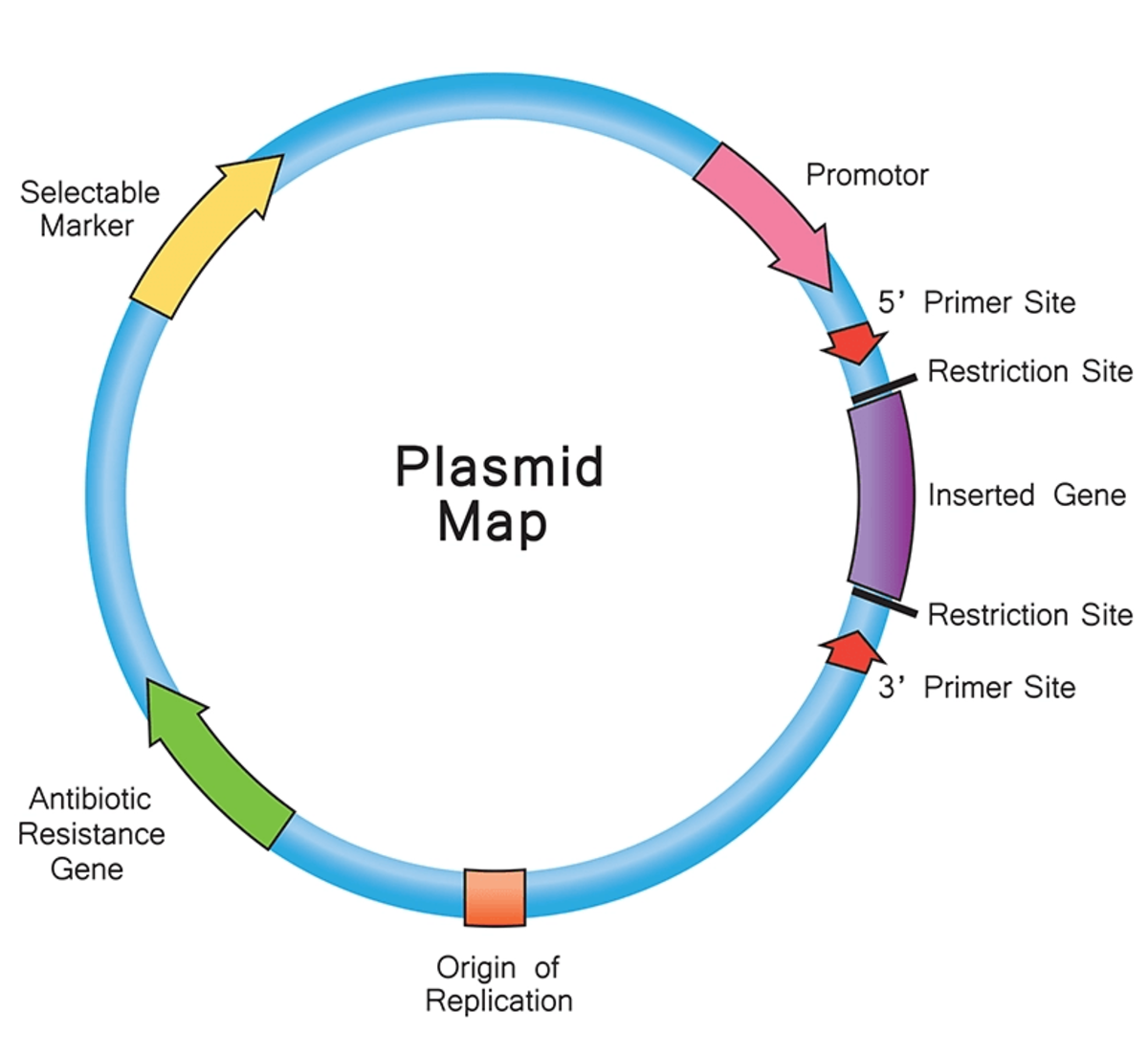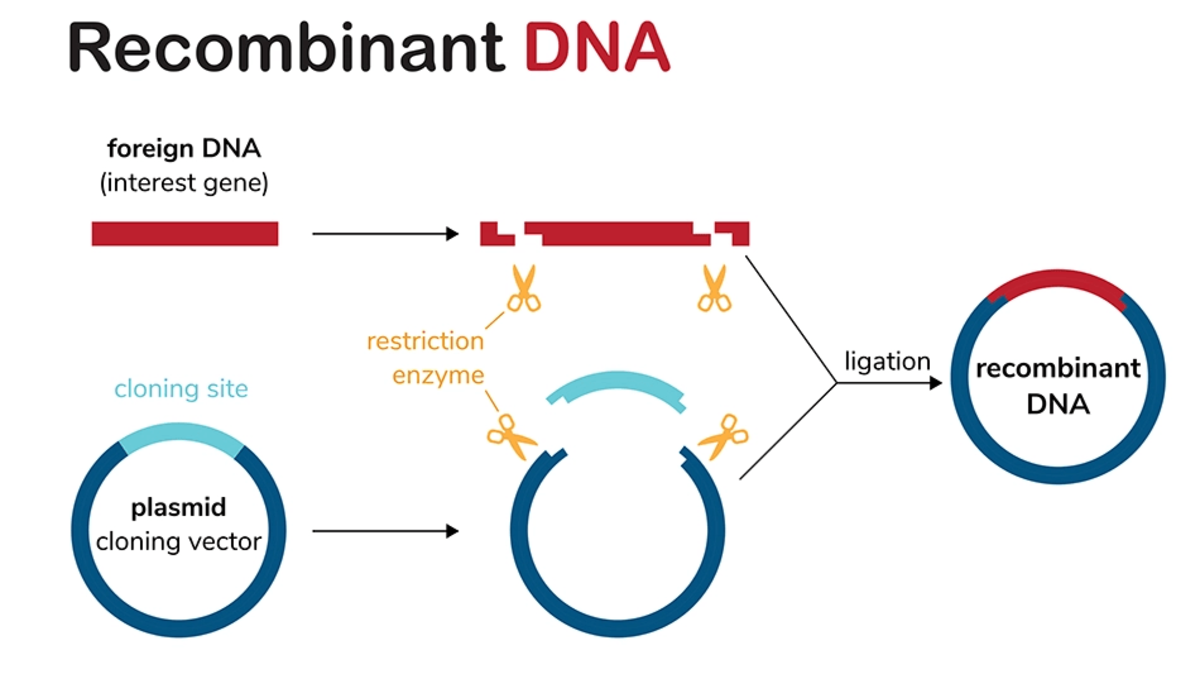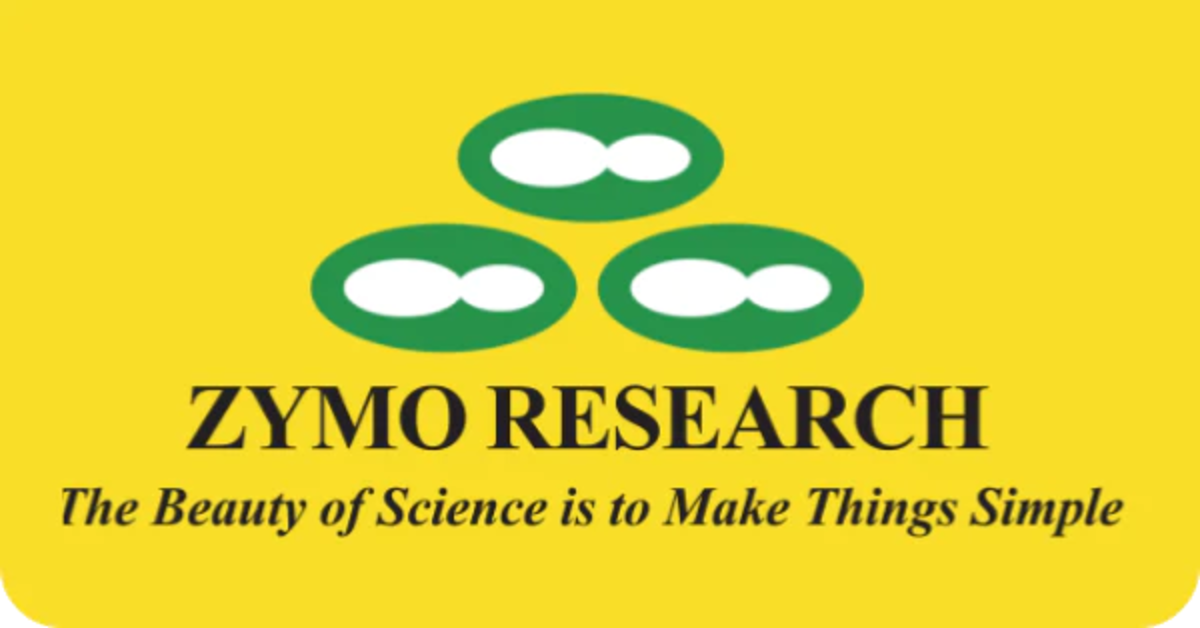Over the past 50 years, plasmid DNA has proven to be an indispensable biological tool. With a wide variety of applications, plasmid DNA is utilised in biotech, academia, and clinical laboratories. Read on to learn about plasmid structure, how to select an appropriate origin of replication (ORI), how to control plasmid copy number, and how plasmid DNA is routinely used in the lab.
Plasmid DNA fundamentals
Plasmid DNA is a small, circular ring of extrachromosomal DNA that can replicate independently of genomic DNA, enabling one bacterial cell to carry multiple plasmid copies. Plasmids often contain genes that confer functional benefits to the host, such as antibiotic resistance or virulence. Some essential elements of plasmid DNA for use in research include:

Key components of plasmid DNA
Origin of replication (ORI): The DNA sequence where replication of a plasmid is initiated by bacterial replication proteins.
Antibiotic resistance gene: The gene which confers antibiotic resistance to the bacteria carrying the plasmid. Antibiotics are added to select for bacteria that have the plasmid.
Selectable marker: Selectable markers are used to identify host cells that have taken up the plasmid. Unlike the antibiotic resistance gene, the selectable marker is typically expressed in the organism of interest and used to confirm uptake of the plasmid DNA.
Promoter region: A sequence of DNA that initiates the transcription of the inserted gene. This plays a key role in regulating the expression of the gene of interest in specific cell types.
Insert: The gene of interest that is cloned into the plasmid.
Multiple cloning site (MCS): A region of the plasmid that contains various restriction sites. This allows for the insert's incorporation into the plasmid via molecular cloning.
Understanding ORIs
There are several ORIs to choose from, each with varying characteristics. A few important things to consider when choosing an ORI are the desired plasmid copy number, host organism, plasmid compatibility, and intended application. ORIs can be classified as either relaxed or stringent. Relaxed ORIs do not need host replication initiation proteins to start replication, whereas stringent ORIs rely on host initiation proteins. As a result, relaxed ORIs typically have higher copy numbers.
| ORI | Incompatibility group | Control |
|---|---|---|
| ColE1 | A | Relaxed |
| PMB1 | A | Relaxed |
| PSC101 | C | Stringent |
| R6K | C | Stringent |
| 15A | B | Relaxed |
Tips for success: Plasmids with the same ORI should not be co-transformed. Two plasmids with the same ORI will compete for the same replication machinery, which may result in unpredictable outcomes.
Plasmid copy number
Plasmid copy number refers to the number of plasmid DNA copies in a single host cell and can range from a dozen to several hundred. Knowing whether your plasmid vector is high, medium, or low copy is important for predicting yield.
| Plasmid name | ORI | Copy number | Classification |
|---|---|---|---|
| pUC | pMBI derivative | 500–700 | High copy |
| pGEM | pUC | 300–500 | High copy |
| pBR322 | pMBI | 15–20 | Low copy |
| pET | pBR322 | 15–20 | Low copy |
| pColE1 | ColE1 | 15–20 | Low copy |
| pBluescript | ColE1 derivative | 300–500 | High copy |
| pCDNA3.1TM | pUC | 300–500 | High copy |
| pLenti6.2/V5-DEST | pUC | 300–500 | High copy |
Factors affecting plasmid copy number
- Larger plasmids usually have a lower copy number due to the increased metabolic burden on the cell.
- Inserting a large DNA fragment into a high copy plasmid may reduce its copy number.
- Some plasmids, like pUC plasmids, include mutations that prevent inhibition of replication, leading to very high copy numbers.
- Plasmids expressing toxic products often maintain a low copy number.
- Certain E. coli strains and suboptimal culture conditions can negatively affect plasmid stability and yield.
Preparing plasmid DNA for laboratory applications
Plasmid DNA is widely used in life science research, from gene therapy to protein expression. Nearly all plasmid applications require the generation of recombinant plasmid DNA and recovery of high-purity plasmid. Below is a typical workflow for preparing recombinant plasmid DNA.
1. Cloning
The gene of interest is integrated into a plasmid vector, resulting in functional recombinant plasmid DNA. Traditional restriction enzyme cloning can be used, but newer methods such as Gateway cloning, Gibson Assembly, and TOPO cloning are increasingly popular.

2. Transformation
Recombinant plasmid is introduced into competent bacteria. E. coli is commonly used due to its well-characterised genetics and ease of cultivation. However, as E. coli is not naturally competent, it must be made competent via chemical or physical methods.
Zymo’s Mix & Go! E. coli Competent Cells are optimised for high-efficiency transformation without the need for heat shock or long incubation steps. To select for transformed bacteria, cultures are grown on antibiotic-containing media. Only bacteria with plasmids encoding antibiotic resistance will survive.
3. Plasmid propagation
The transformed E. coli is cultured in antibiotic-containing liquid media. This step allows the bacterial population – and hence plasmid DNA – to expand, increasing the plasmid yield.
4. Plasmid isolation and purification
Once the culture reaches a suitable density, plasmid DNA is extracted and purified for downstream applications. High-quality purified plasmid can then be introduced into other bacterial or eukaryotic cells.
Ensure your plasmid is suitable for all downstream applications with Zymo Research’s ZymoPURE Plasmid Purification Kits – a fast, efficient solution for isolating transfection-grade plasmid DNA from E. coli. ZymoPURE is widely cited for applications including:
- Gene therapy
- Vaccine development
- Recombinant antibody therapy
- Protein expression
- Gene editing
- Viral vector production
Scientists at Zymo Research have designed purification technologies to help you recover the highest-quality plasmid DNA possible. ZymoPURE products are available at LubioScience.
This article is based on an original post by Zymo Research. You can read the original here.
Featured supplier

Zymo Research
Zymo Research is a leader in molecular biology, offering a comprehensive range of products for DNA, RNA, and epigenetics research. Established in California in 1994, the company is renowned for its high-quality nucleic acid purification technologies, including kits and reagents for DNA and RNA clean-up, isolation, and sequencing. Zymo is also a pioneer in epigenetics, with products for DNA methylation analysis, chromatin analysis, and NGS library preparation. Each product is designed to be simple to use, reliable, and available at competitive prices, making them ideal for both academic and biopharmaceutical research.
